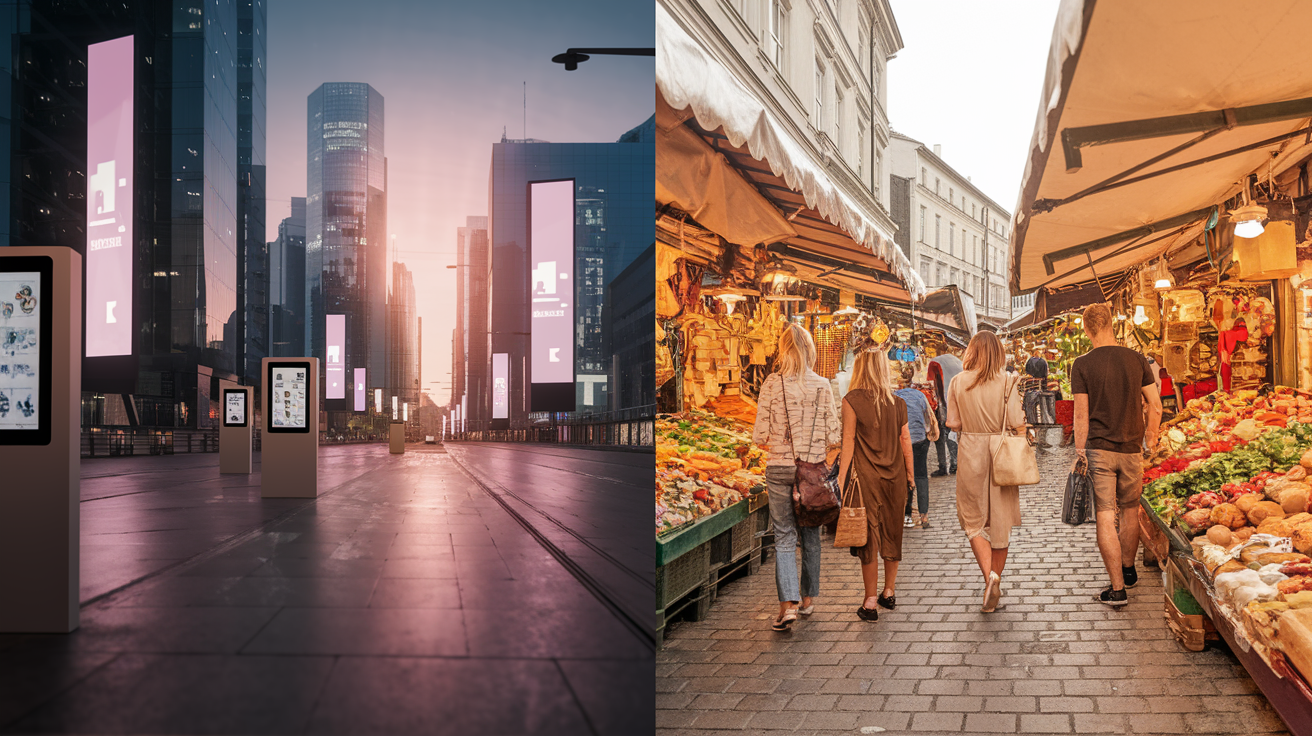The retail landscapes of Scandinavia and Southern Europe are akin to two distinct orchestras, each playing its own symphony of digital adaptation and consumer behavior. While Scandinavia leads with a digital crescendo, embracing innovation and sustainability, Southern Europe clings to the melody of tradition and personal interaction. This article explores the digital and consumer dynamics shaping these regions, providing insights for investors looking for opportunities in diverse retail markets.
Digital Evolution of Retail: The Diverging Paths of Scandinavia and Southern Europe

In the dynamic retail landscape, digitalization is at the forefront of transformation. Scandinavia and Southern Europe, though part of the same continent, navigate the digital terrain in distinct ways. This chapter explores the complexities of their approaches, drawing a comparative narrative that highlights what distinguishes them and what unites them in common goals.
The digital prowess of Scandinavia is unmatched, with countries like Sweden, Denmark, and Norway leading the charge. The region’s advanced digital infrastructure serves as a solid foundation for the burgeoning e-commerce sector. Seamless online transactions are not just a convenience but the norm, reflecting the deep integration of technology into every aspect of retail. A key aspect of Scandinavian retail is its focus on sustainability. Retailers do not merely adopt digital solutions for efficiency but are also committed to eco-friendly practices, supported by a consumer base that prioritizes sustainability.
Moreover, Scandinavian consumers exhibit a fascinating trend in cross-border shopping. The sophisticated use of digital platforms by consumers, particularly Norwegians, underscores the opportunity for global brands to enter this market. This cosmopolitan shopping behavior is further supported by events like the D-Congress in Gothenburg, which emphasizes the role of emerging technologies in shaping innovative retail experiences.
Conversely, the path of Southern Europe towards digitalization is characterized by varying adoption rates and payment preferences. While Spain and Portugal show significant growth in mobile commerce, the breadth of digital adaptation is not uniform across the region. For instance, open invoices remain popular in Portugal, diverging from the card-dominated digital payment methods in Scandinavia.
The regulatory context of Southern Europe also plays a critical role. While the European Union strives for regulatory consistency, local nuances require merchants to continually adapt to evolving regulations on consumer privacy and payments. This regulatory landscape presents both challenges and opportunities, necessitating agility in managing retail operations.
Examples in action speak volumes. In Scandinavia, the new retail initiatives of Liverpool FC in partnership with Unisport illustrate the balance between digital convenience and the appeal of physical retail spaces. Meanwhile, in Southern Europe, improved logistics capabilities, particularly in Spain, bolster the potential for cross-border e-commerce.
Ultimately, while Scandinavia is synonymous with digital sophistication and ecological awareness, Southern Europe reflects a mosaic of digital integration punctuated by traditional sensibilities. However, both regions are united by a common goal: to adapt to the ever-evolving demands of consumers within a digital framework that respects both sustainability and cultural heritage.
Cultural Influences on Consumer Behavior in Retail in Scandinavia and Southern Europe

Consumer behavior in the retail sector offers a fascinating insight into how cultures shape purchasing patterns and preferences. In the context of Scandinavia and Southern Europe, the interaction of tradition, economic conditions, and technological advancements creates diverse consumer landscapes.
The retail environment in Scandinavia represents a proactive engagement with technology and sustainability. These societies, particularly in Sweden and Denmark, are renowned for their adoption of digital payment systems, deeply embedded in everyday transactions. This cashless culture, with over 85% of retail interactions being digital, is not just a matter of convenience but reflects a broader cultural trust in technology-driven efficiency. Additionally, Scandinavian consumers prioritize sustainability, mirroring their social values. The preference for organic and locally sourced products reflects a commitment to environmental responsibility.
Scandinavian retailers have cleverly adapted, with a high concentration of large companies dominating the market, offering a wide range of products tailored to a sustainability-conscious audience. Moreover, gift cards are widely accepted, not just as convenient monetary solutions but also as personalized gifts, aligning with the culture’s appreciation for flexibility and individuality.
In stark contrast, Southern Europe displays a lasting affinity for traditional retail experiences. Despite economic challenges, including higher unemployment rates and slower economic growth, consumers in countries like Spain and Italy maintain a strong preference for personal interaction during shopping. This reflects deeply rooted cultural values, where shopping is seen as a social activity rather than a mere transaction. Economic factors also lead to increased price sensitivity, driving demand for good value products and influencing retail landscapes towards different, more traditional configurations.
The adoption of digital payments in Southern Europe is increasing, although it still lags behind Scandinavia. This growing trend is fueled by significant improvements in digital infrastructure, gradually closing the gap. The adoption of gift cards is less common, although it is gaining ground within corporate incentive frameworks, nudging consumer habits towards modern practices.
As these regions continue to evolve, Scandinavia is expected to reinforce its leadership in digital and sustainable retail practices, while Southern Europe may witness accelerated growth in digital adoption driven by economic necessity and cultural changes. This dynamic interplay highlights how consumer behavior in retail is a tapestry woven with threads of technology, tradition, and economic realities.